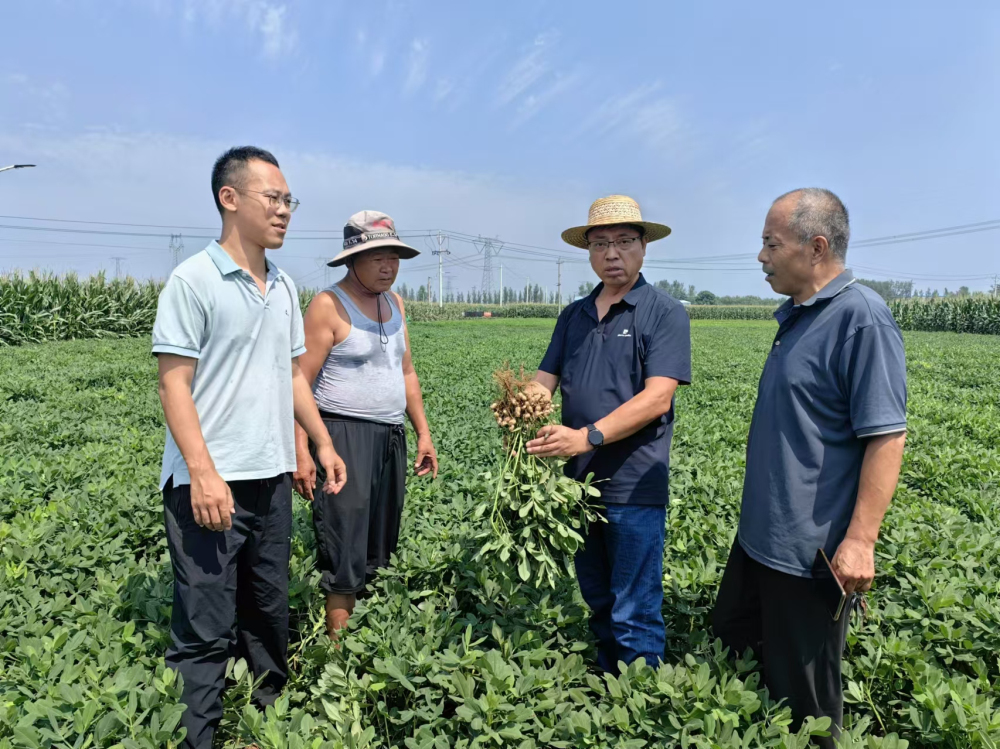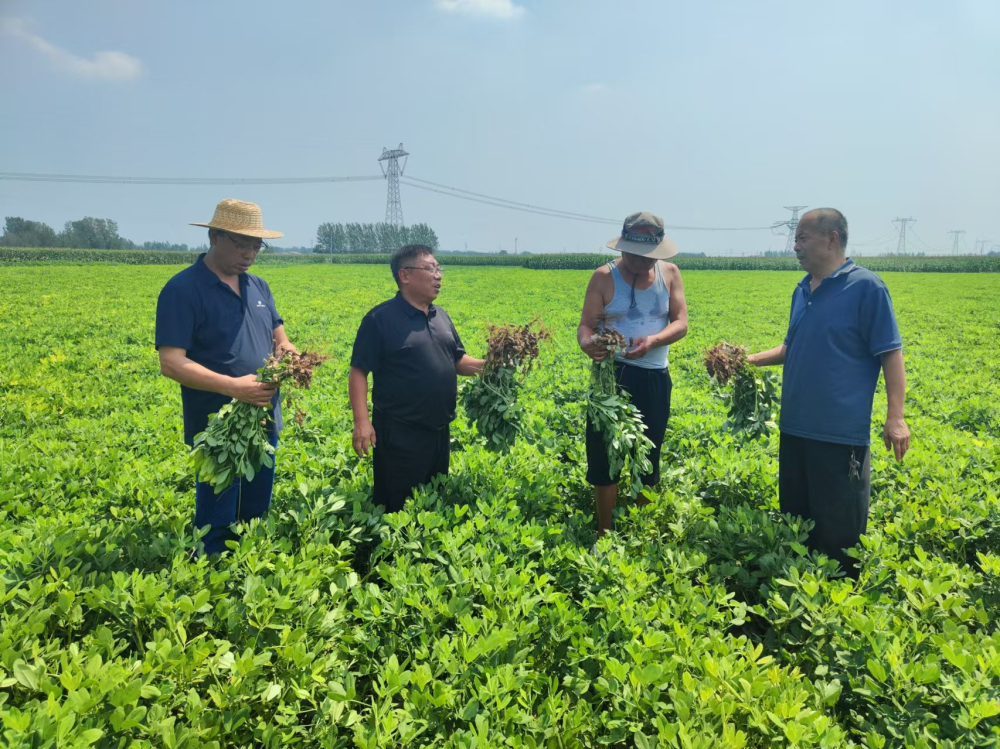From August 23 to 24, 2024, SONG Yahui and HAN Peng, two researchers from the Institute of Cereal and Oil Crops, went to high-oleic acid peanut demonstration bases in Handan and Hengshui to investigate and provide instructions on later-period management of the demonstration fields.
 <
<
From late July to late August, the overall rainfall in Hebei increased by 30%-40% compared to the same period last year. The sunshine hours are less and the relative water content of soil is higher in some areas. The conditions of high temperature and high humidity were easy to lead to the occurrence of southern blight, but no waterlogging damage occurred in the investigated plots. At present, the occurrence of peanut pod rot was more severe in spring peanut continuous cropping plots and plots without spraying three times of fungicide. Coupled with the recent moderate to heavy rain in central and southern Hebei, there was a certain trend of aggravation. High temperature and rainy weather easily lead to premature aging of peanuts in the later period. Due to high temperature and drought in the early period of summer peanut, the seedling growth was not good. After entering the rainy season, peanut plants began compensatory growth, and now the growth was good. Leaf spot and other leaf diseases should be prevented in time.
 <
<
During the inspection, the following technical suggestions were put forward for the later period management:
1.Strengthen the prevention and control of diseases and insect pests and prevent premature aging. If there was no foliar spray for the third time, spray as soon as possible. In case of continuous rain or heavy rainfall, spray fungicide and foliar fertilizer in time after rain to prevent waterlogging and premature aging. Summer sowing peanuts should be sprayed with fungicide and leaf fertilizer in time to prevent leaf spot disease and premature aging.
2.Prevention and treatment of southern blight and pod rot. At present, there are southern blight and pod rot disease in all the main producing areas of peanuts, and the local occurrence is serious. The mixture of thifluzamide, pyraclostrobin and tebuconazole should be used to spray the root, which has a certain effect on the early stage of the disease, especially on the prevention of southern blight.
3.Harvest in time. Spring sowing peanuts began to enter the harvest period, and should be harvested according to the weather forecast. The principle of harvesting and sunning on sunny days and not harvesting on rainy days should be adopted. Seed-purpose peanuts can be appropriately harvested 4-5 days in advance.
(Source from )